Welcome back to our journey into AI’s role in education. If you’ve been experimenting with ChatGPT and other AI tools to elevate your teaching practices, you’re already aware of the significant impact these technologies can have.
Building on the ACHIEVE framework I introduced previously, we’re about to explore ten practical strategies for teaching AI. These strategies are tailored to harness the unique strengths of various AI tools, thereby enhancing and enriching K–12 education.
From fostering creative writing with ChatGPT, to navigating data analysis with Google Gemini, and enhancing research with Microsoft Copilot, each strategy is meticulously crafted to empower you and your students to fully leverage AI in learning environments.
If your aim is to deepen your grasp on effective AI utilization in the classroom, don’t miss my earlier discussion on Mastering the Achieve Framework.
Let’s embark on this enlightening journey and unveil how these tools can fundamentally transform your teaching and your students’ learning experiences!
1. Interactive Storytelling
Interactive storytelling can captivate students’ imaginations and offer them a hands-on experience with AI. By using different AI tools, students can learn how to craft narratives, understand character development, and explore various plot outcomes.
ChatGPT: Unleashing Creativity
- Strengths: Known for its creative flair, ChatGPT can help students build complex stories with rich characters and intricate plots.
- Activity Example: Have students create a fantasy world where ChatGPT helps to develop the lore and inhabitants.
- Prompts:
- “Imagine a world where dragons are friends with humans. Describe a day in the life of a dragon.”
- “Create a dialogue between a wizard and a robot about magic versus technology.”
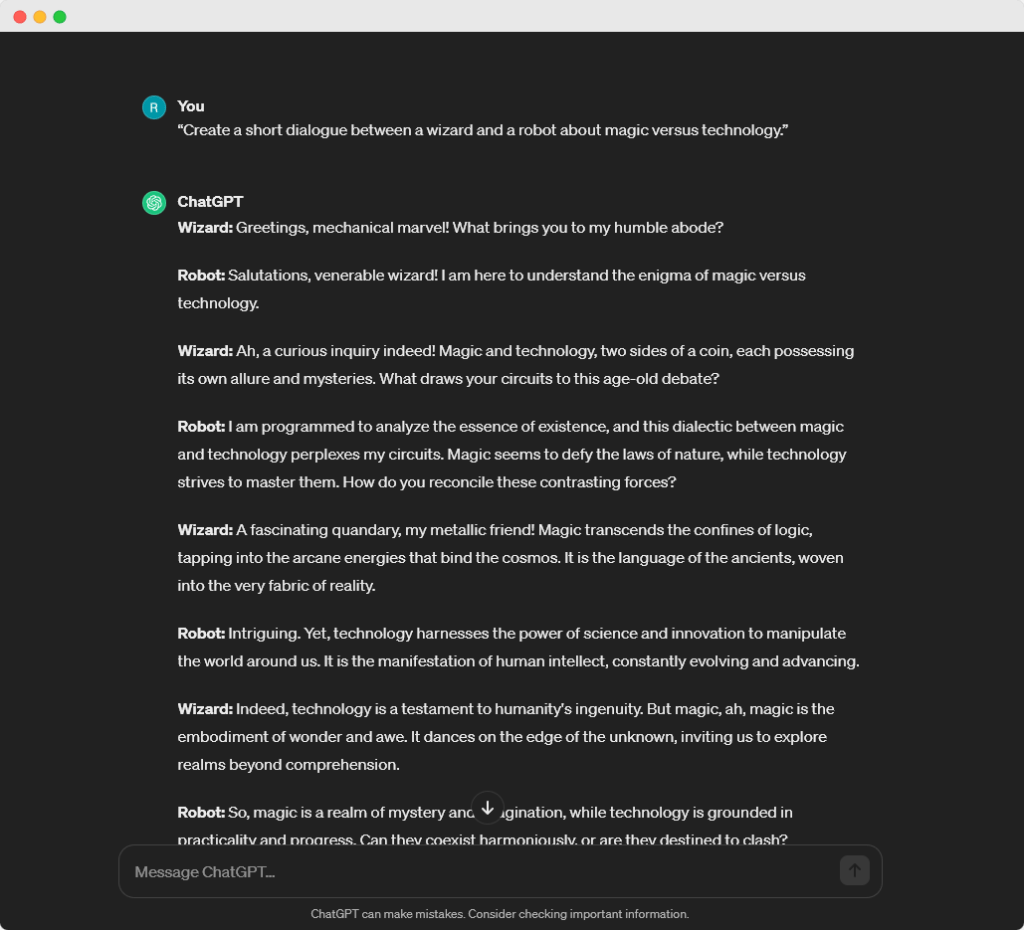
Google Gemini: Leveraging Multimedia
- Strengths: With access to YouTube, Google Gemini can incorporate multimedia elements into storytelling, enhancing the narrative with relevant videos.
- Activity Example: Students can script a short play, and Google Gemini can suggest YouTube videos to act as backdrops or thematic inspiration.
- Prompts:
- “Find a YouTube video that best represents the mood of a story set in space.”
- “Suggest videos that could help visualize a chase scene in an adventure story.”
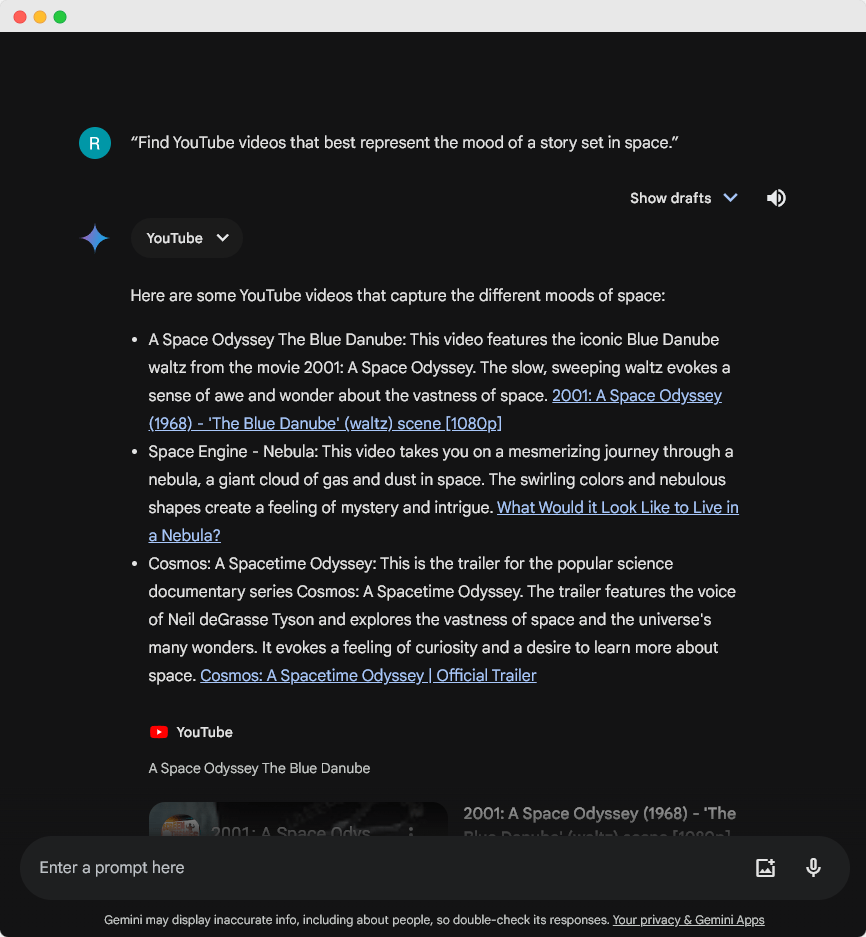
Microsoft Copilot: Research and Realism
- Strengths: Best for research, Microsoft Copilot can provide factual information to add realism to stories or help with historical fiction.
- Activity Example: Students can write a story set in a specific historical period, and Copilot can supply accurate details to enrich the setting.
- Prompts:
- “What were the daily activities of children during the Renaissance period?”
- “Describe the technological advancements that could exist in a future city.”
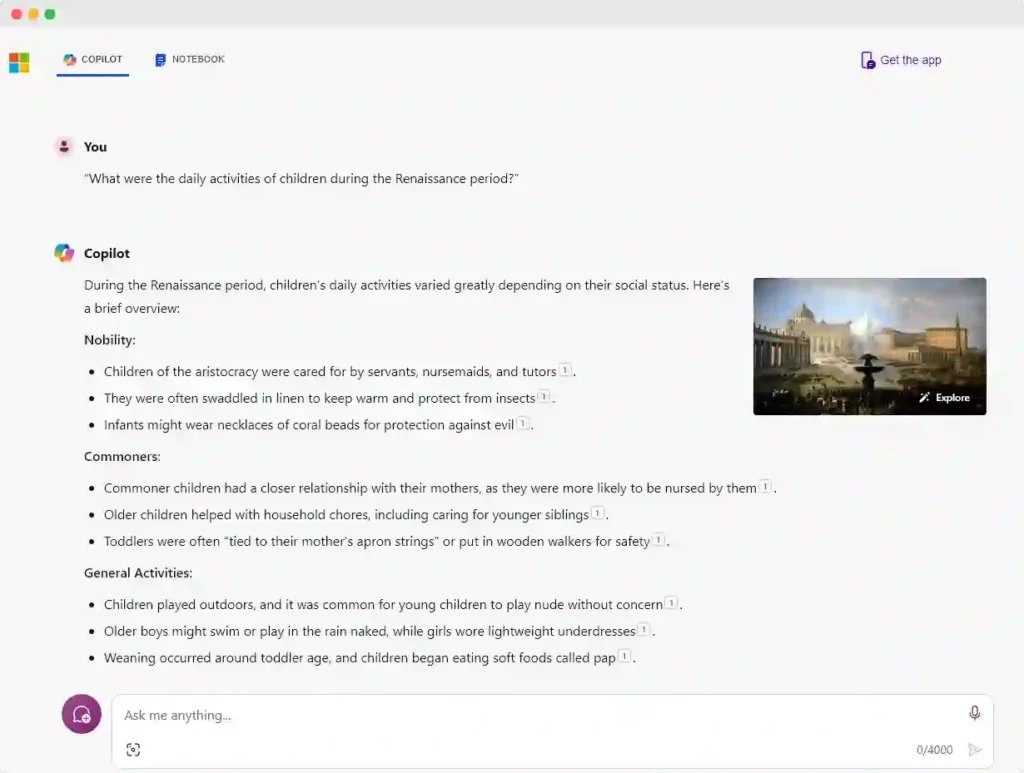
By integrating these AI tools into classroom activities, students not only learn about storytelling but also how to interact with AI to enhance their creativity and research skills. Teachers can guide students in crafting prompts that play to each tool’s strengths, resulting in engaging and educational experiences.
2. AI-Powered Research Projects
AI-powered research projects can transform the way students gather information, analyze data, and present their findings. By leveraging different AI tools, students can experience a more dynamic and comprehensive approach to research.
ChatGPT: Guided Research and Writing
- Strengths: ChatGPT excels at assisting with the formulation of research questions and providing written explanations of complex topics.
- Activity Example: Students can use ChatGPT to help outline their research papers and generate bibliographies.
- Prompts:
- “Help me create an outline for a research paper on renewable energy sources for my 7th grade assignment.”
- “List the steps involved in conducting a scientific experiment on plant growth.”
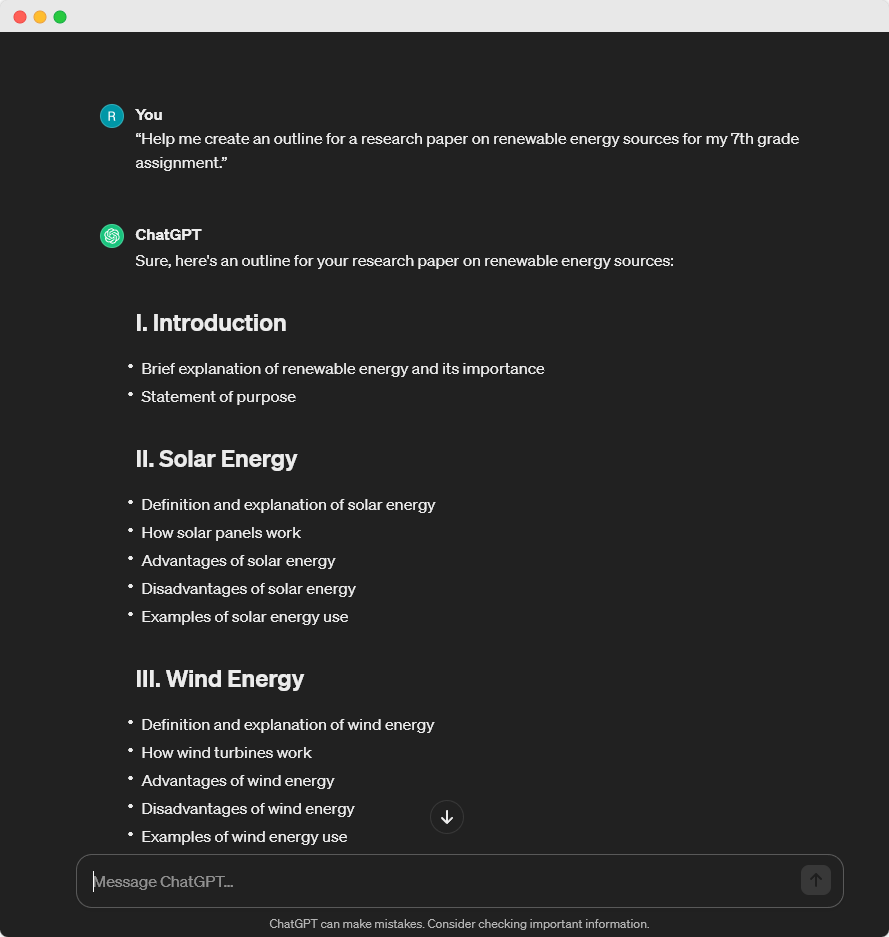
Google Gemini: Multimedia Data Analysis
- Strengths: Google Gemini’s access to YouTube allows it to enrich research with a variety of multimedia content, offering a broader perspective on topics.
- Activity Example: Students can incorporate video content into their presentations to support their research findings.
- Prompts:
- “Find YouTube videos that explain the concept of machine learning.”
- “Show me examples of climate change effects documented in videos.”
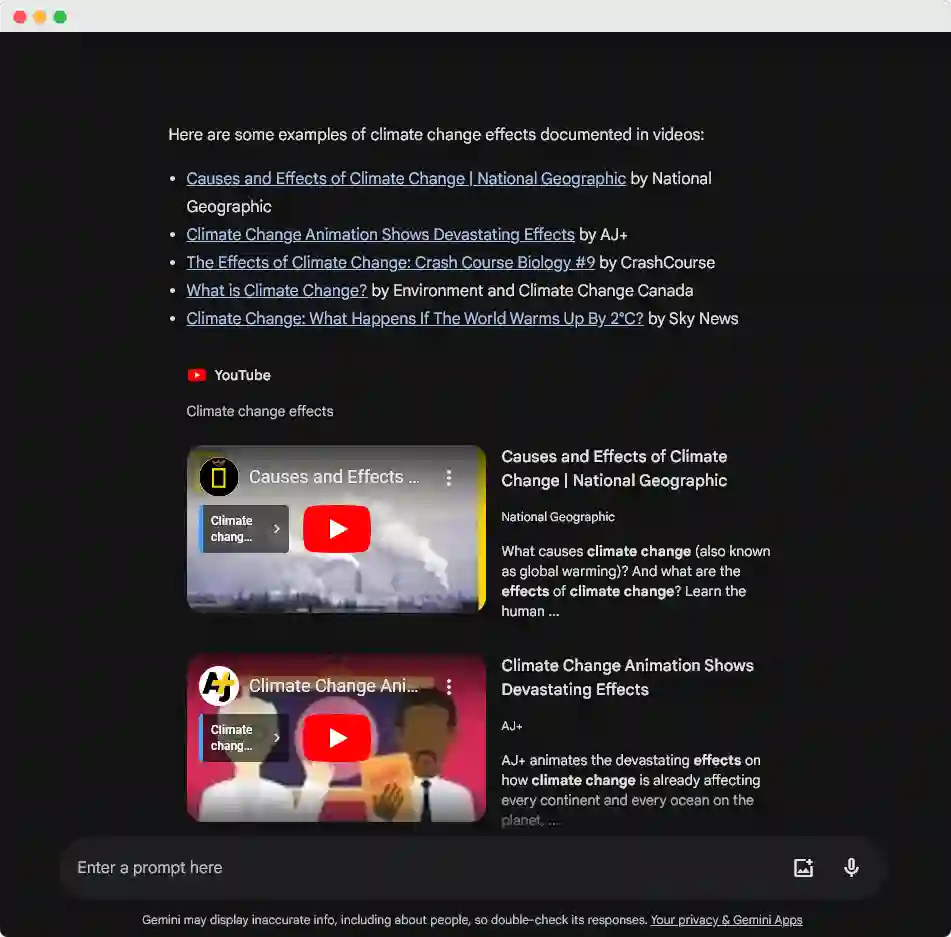
Microsoft Copilot: In-Depth Exploration and Internet Access
- Strengths: With its ability to access the internet, Microsoft Copilot can provide up-to-date information and detailed explanations on a wide range of topics.
- Activity Example: Students can delve into current events or historical records to enhance their research projects.
- Prompts:
- “What are the latest developments in quantum computing?”
- “Provide a detailed account of the events leading up to the first moon landing for my 5th grade class.”
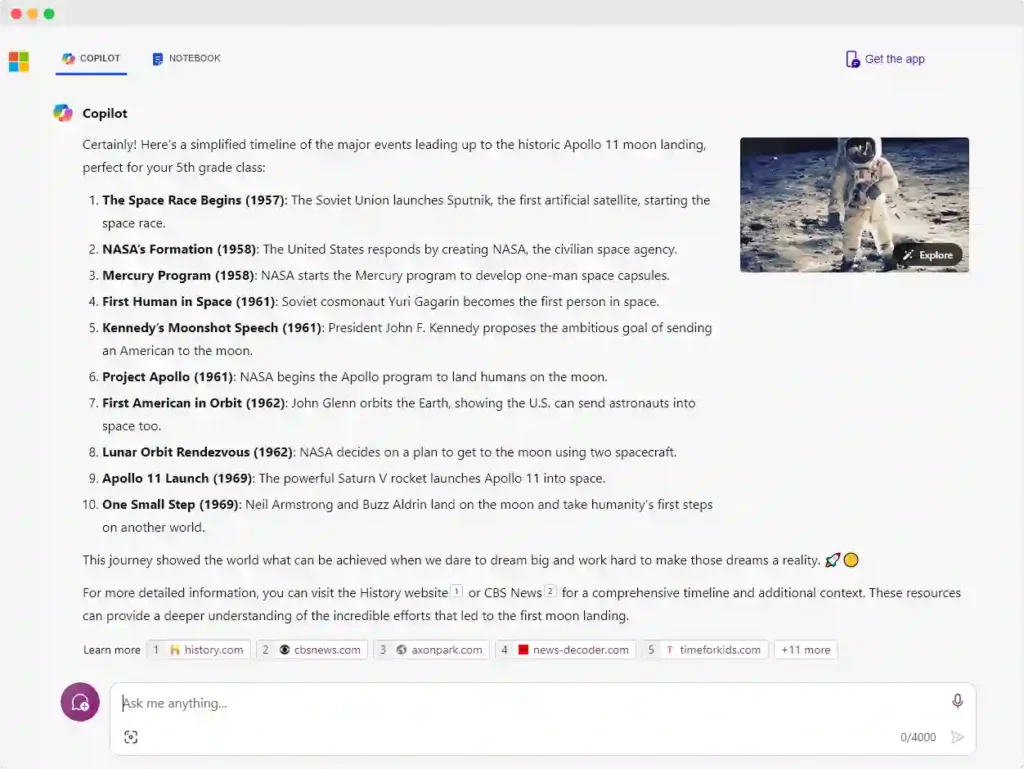
Students can learn how to filter through a lot of data and present their results convincingly by using these AI tools in their research projects. Through helping students make good questions that use the best features of each tool, teachers can help students gain a better understanding of how research works.
3. Language Learning with AI
Language learning is greatly enriched through the use of AI, which provides students with personalized and interactive experiences. Each AI tool offers unique features that can help students improve their language skills.
ChatGPT: Conversational Practice and Grammar Assistance
- Strengths: ChatGPT is an excellent conversational partner, offering real-time dialogue and grammar correction.
- Activity Example: Students can engage in text-based conversations with ChatGPT to practice language fluency and receive instant feedback on their grammar.
- Prompts:
- “Converse with me in French about your favorite hobbies and correct my mistakes.”
- “Let’s have a debate in Spanish on the benefits of renewable energy.”
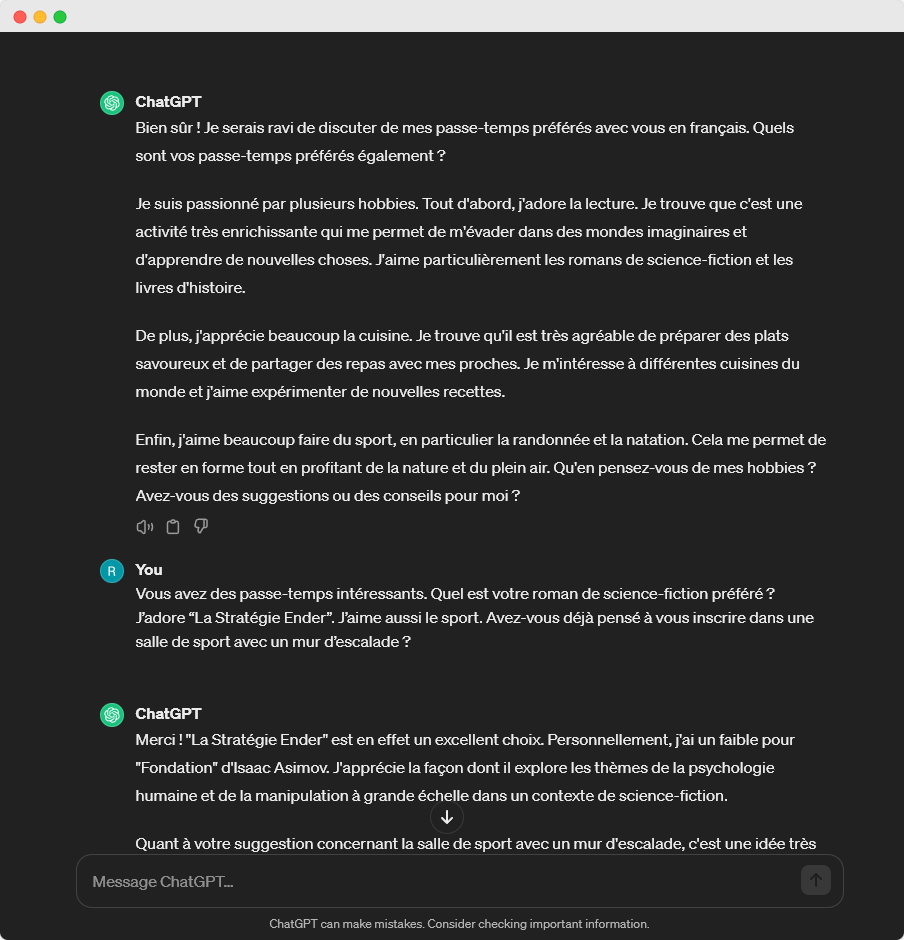
Google Gemini: Access to Multilingual Content
- Strengths: With access to YouTube’s vast library, Google Gemini can provide a wealth of multilingual content for immersive language learning.
- Activity Example: Students can watch videos in their target language and use Google Gemini to summarize and discuss the content.
- Prompts:
- “Find a YouTube video in German that explains the water cycle and summarizes the key points.”
- “Find one documentary in Mandarin about the Great Wall of China. Then create a 10-question quiz about the contents of the video.”
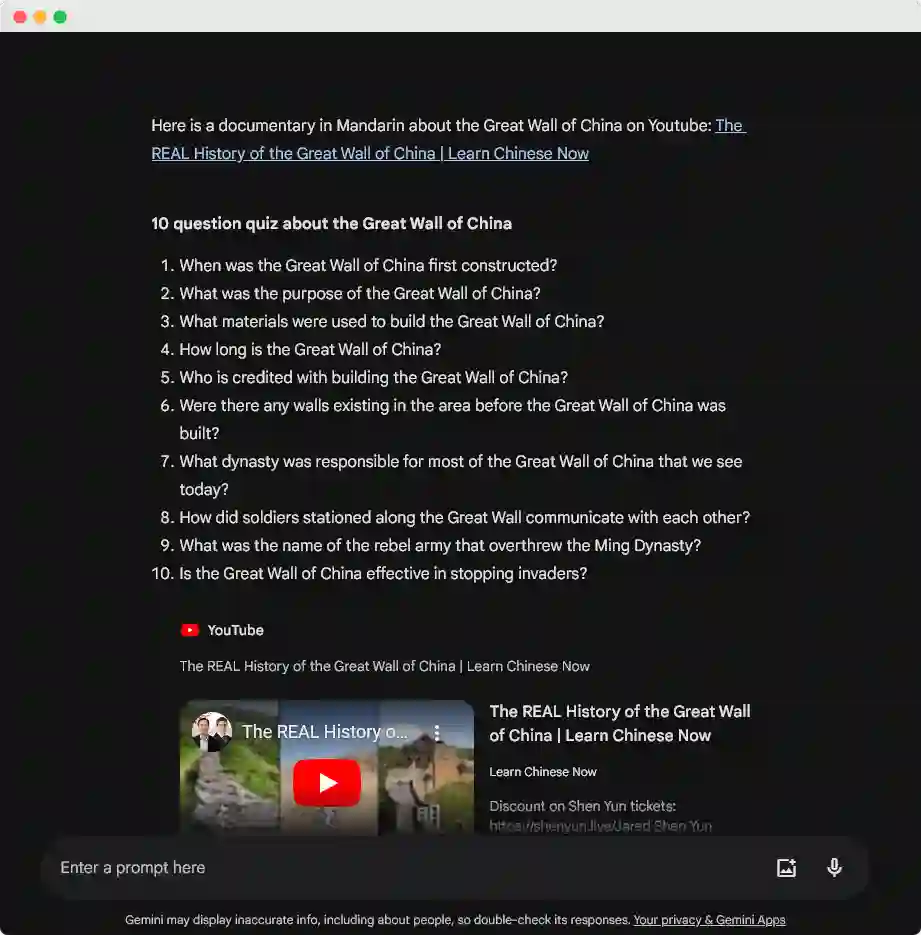
Microsoft Copilot: Cultural Context and Pronunciation Guides
- Strengths: Microsoft Copilot can offer insights into cultural nuances and provide pronunciation guides to aid language comprehension.
- Activity Example: Students can explore different cultures through Copilot and practice pronunciation with its guidance.
- Prompts:
- “Explain the significance of the Japanese tea ceremony and help me pronounce related terms.”
- “Teach me common phrases used in Italian greetings and their proper pronunciation.”
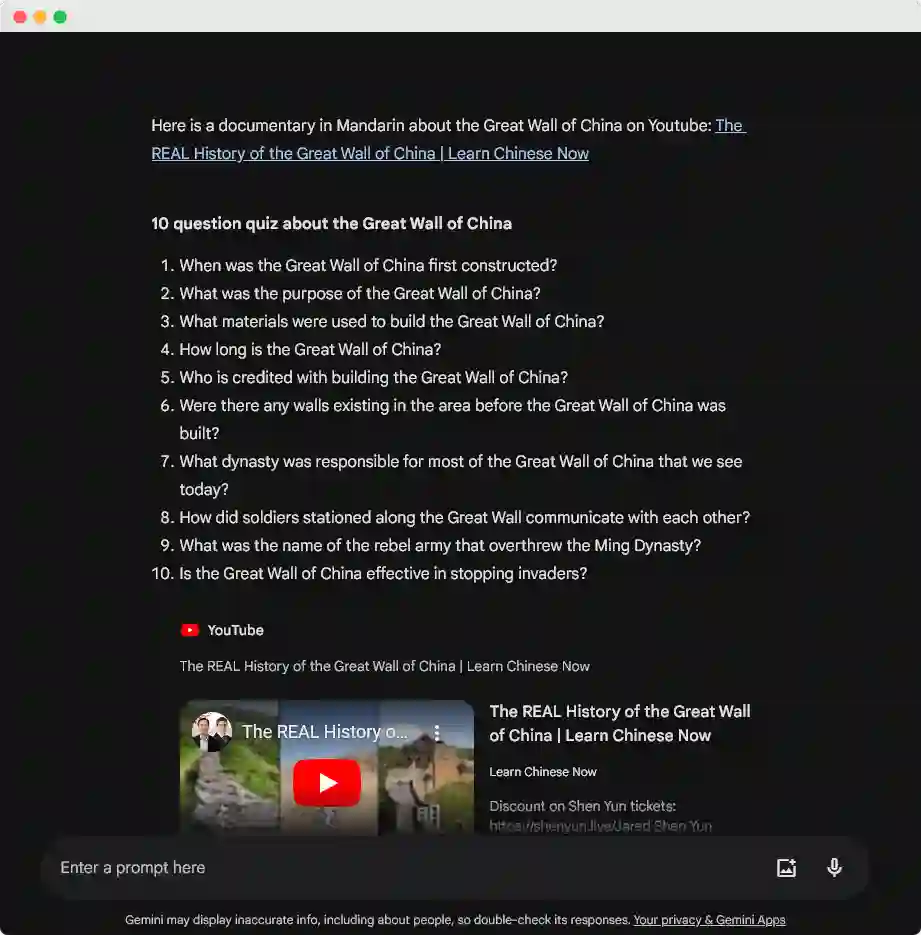
Students can get a lot out of learning a language by using these AI tools. They can practice speaking, get access to a wide range of material, and learn about other cultures. Teachers can make prompts that push students to use the best features of each tool, which will help them become more involved with the language.
4. Math Problem Solving
AI tools can significantly enhance the way students approach and solve math problems. Each tool offers unique capabilities that can aid in understanding and applying mathematical concepts.
ChatGPT: Step-by-Step Explanations
- Strengths: ChatGPT can break down complex math problems into understandable steps, making it easier for students to grasp difficult concepts.
- Activity Example: Students can input a challenging algebra problem, and ChatGPT will guide them through the solution process.
- Prompts:
- “Explain how to solve for x in the equation (2x + 5 = 15).”
- “Walk me through the steps to calculate the area of a circle with a radius of 4 units.”
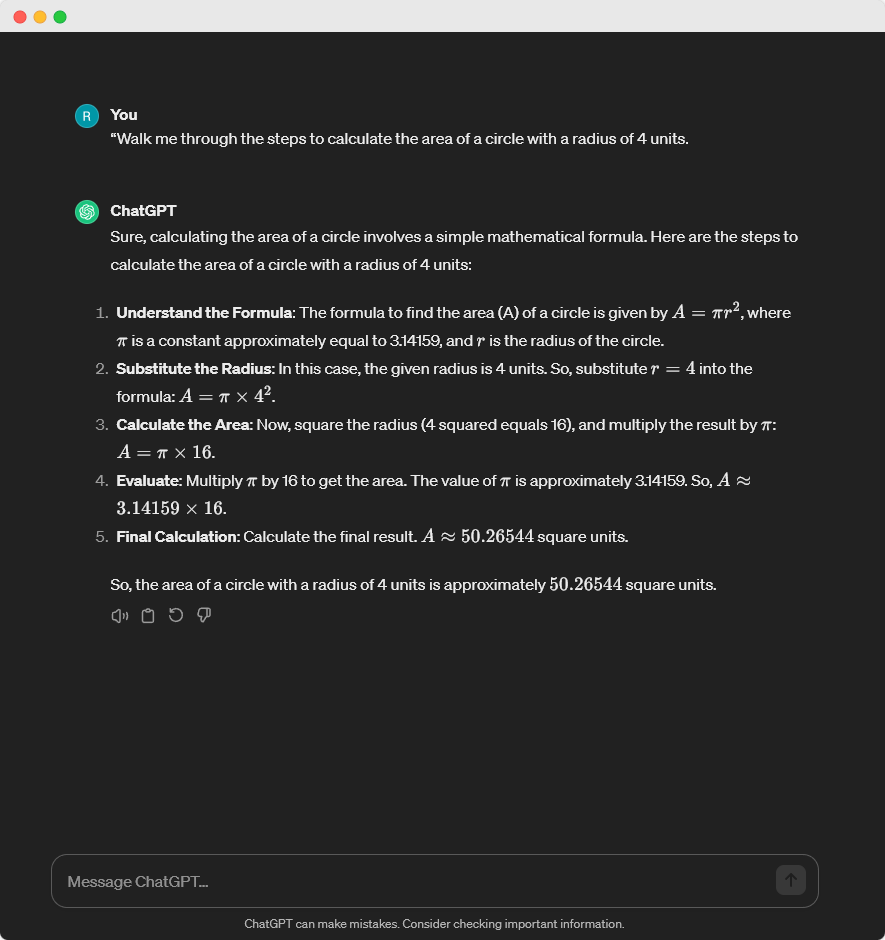
Google Gemini: Visual Learning
- Strengths: Google Gemini can utilize YouTube’s resources to provide visual explanations and tutorials, which can be especially helpful for visual learners.
- Activity Example: Students can watch videos on geometric constructions and then use Google Gemini to answer follow-up questions.
- Prompts:
- “Find a video that demonstrates how to construct an equilateral triangle.”
- “Show me a tutorial on solving quadratic equations by completing the square.”
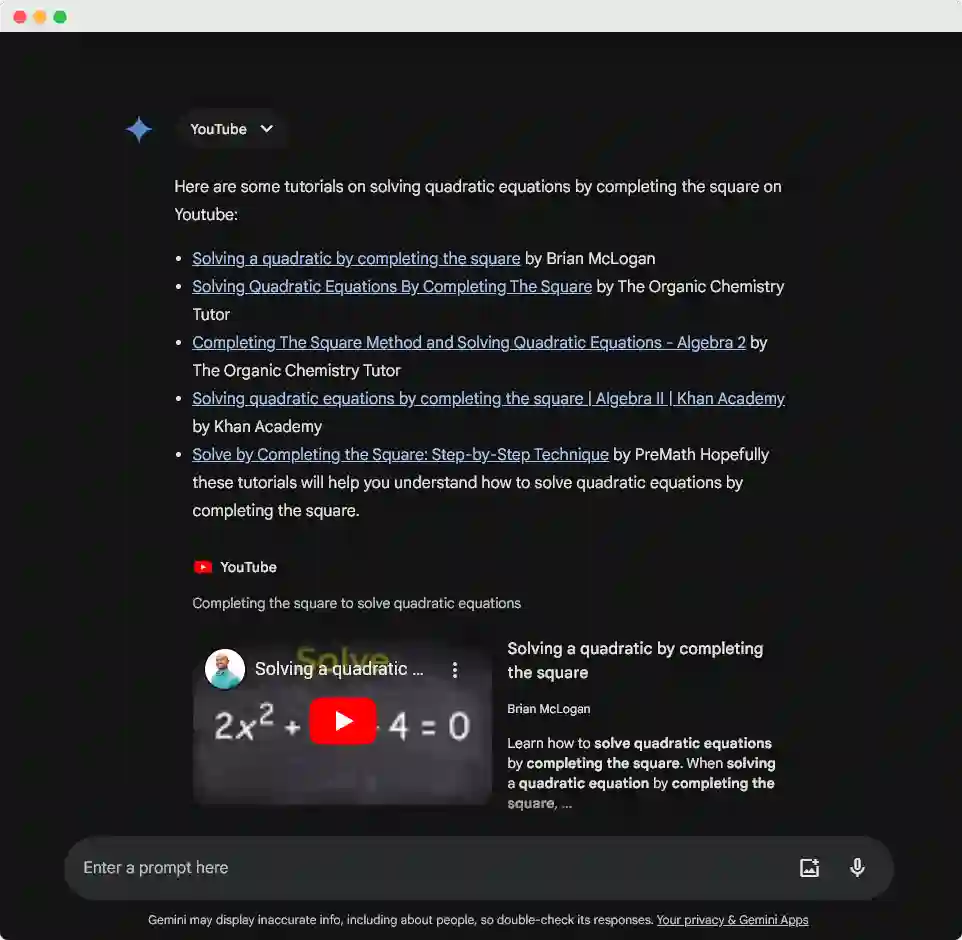
Microsoft Copilot: Practice and Assessment
- Strengths: Microsoft Copilot can generate a variety of practice problems and quizzes, allowing students to test their knowledge and track progress.
- Activity Example: Teachers can use Copilot to create custom quizzes that adapt to each student’s learning level.
- Prompts:
- “Create a set of practice problems for polynomial division.”
- “Generate a quiz on trigonometric identities for an advanced math class.”
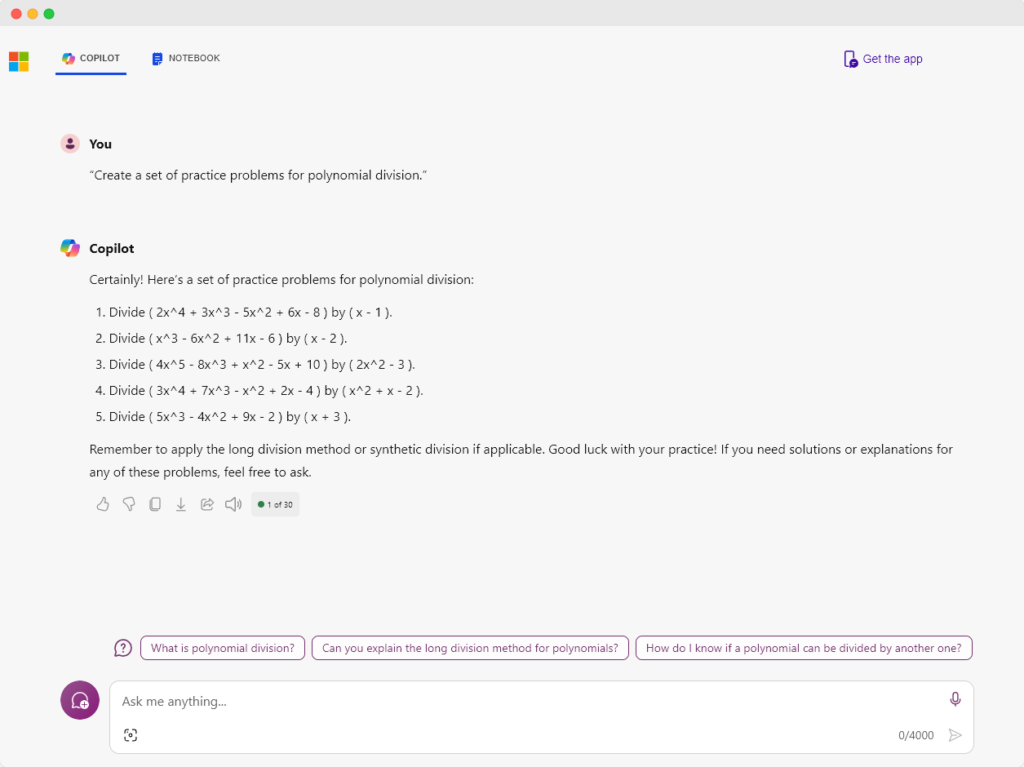
These AI tools make math teaching more engaging and individualized. Teachers can push pupils to try new problem-solving methods and review arithmetic concepts.
5. Science Experiments and Simulations
AI tools can revolutionize science education by providing interactive simulations and detailed explanations of complex scientific concepts. Each tool offers unique features that can help students engage with science in new and exciting ways.
ChatGPT: Hypothesis Testing and Predictions
- Strengths: ChatGPT can simulate scientific discussions and predict experiment outcomes, making it a valuable tool for hypothesis testing.
- Activity Example: Students can propose hypotheses for a given scientific problem and use ChatGPT to explore potential outcomes.
- Prompts:
- “Predict the results of an experiment where plants are grown in different soil types.”
- “Discuss the possible effects of zero gravity on human muscle tissue.”
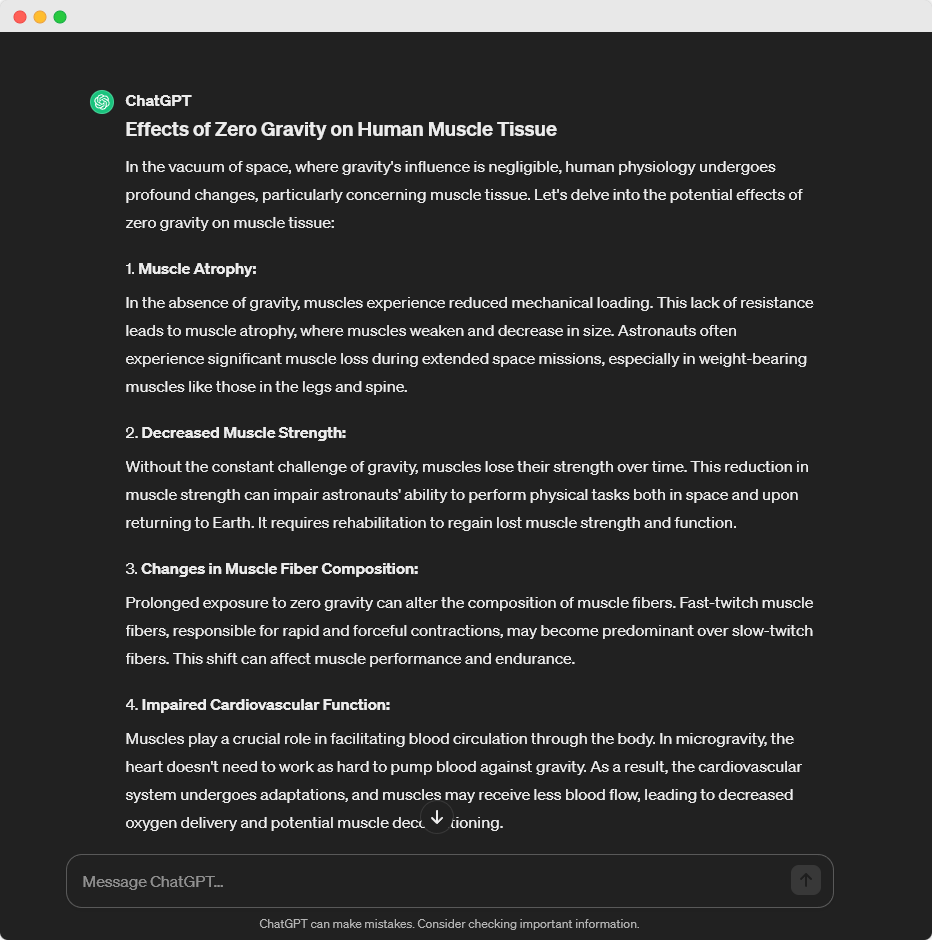
Google Gemini: Virtual Lab Environments
- Strengths: Google Gemini can provide access to virtual labs and simulations, allowing students to conduct experiments in a safe, controlled environment.
- Activity Example: Students can perform virtual dissections or chemical reactions without the need for physical lab equipment.
- Prompts:
- “Simulate a frog dissection and identify the major organs.”
- “Create a virtual chemical reaction between vinegar and baking soda.”
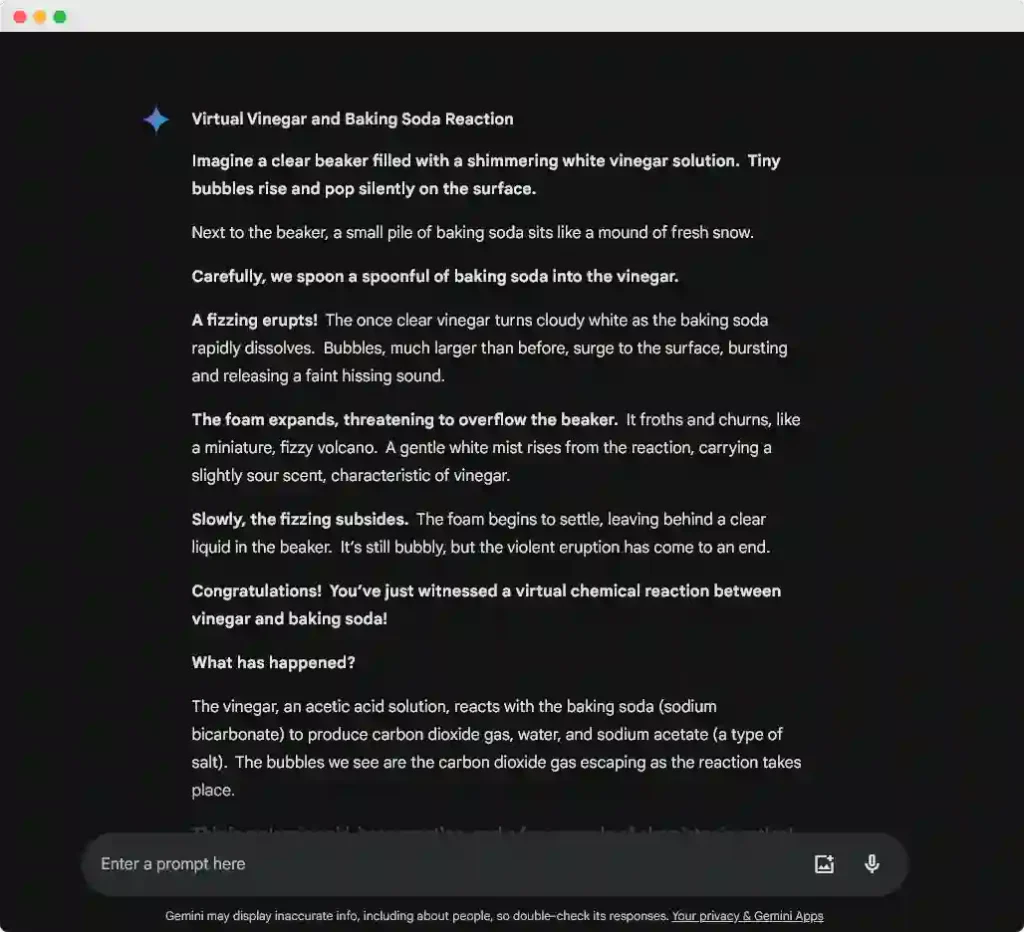
Microsoft Copilot: Detailed Scientific Explanations
- Strengths: Microsoft Copilot can offer in-depth explanations of scientific phenomena, supplementing textbook information with rich, detailed content.
- Activity Example: Students can delve into topics like astronomy or biology and receive comprehensive explanations from Copilot.
- Prompts:
- “Explain the process of photosynthesis in detail.”
- “Describe the lifecycle of a star from birth to supernova.”
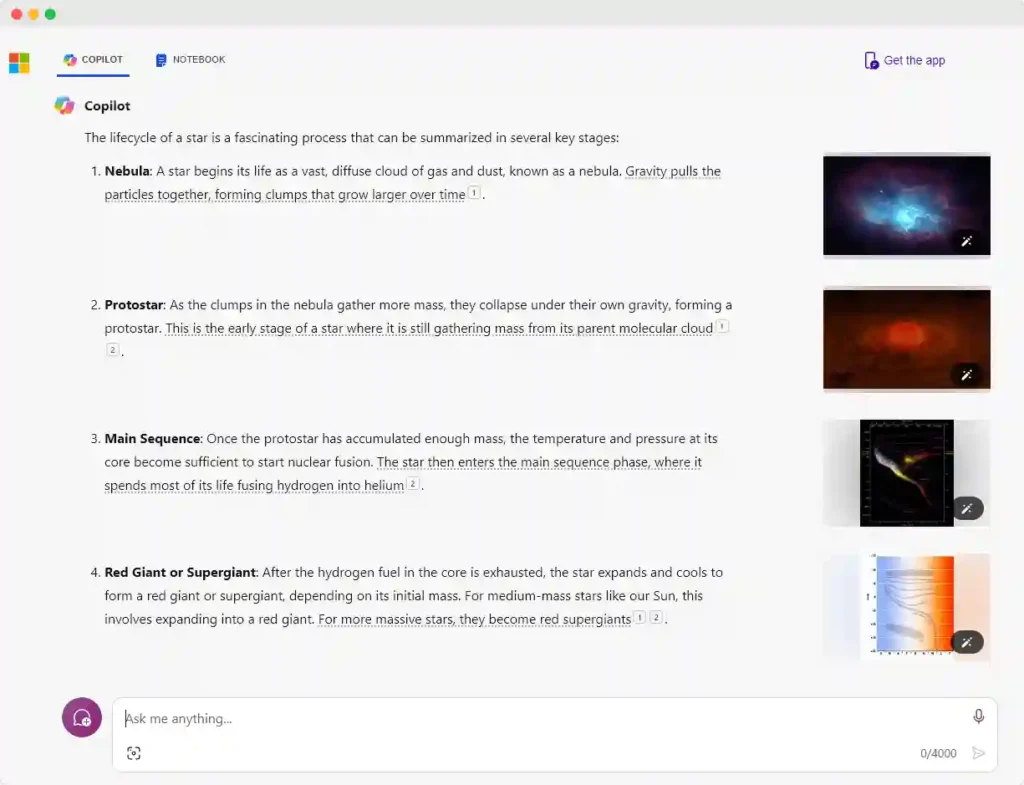
Students can get more hands-on training and a better understanding of scientific principles when these AI tools are used in science classes. Teachers can make prompts that push students to use the best features of each tool. This makes the classroom more interesting and useful.
6. Creative Writing and Poetry
Creative writing and poetry are excellent avenues for students to express themselves and explore language. AI tools can provide unique support in this creative process, each with its own strengths.
ChatGPT: Inspiring Creativity
- Strengths: ChatGPT is adept at generating creative content, making it an ideal tool for inspiring students’ poetry and stories.
- Activity Example: Students can collaborate with ChatGPT to write poems or short stories, with the AI suggesting imaginative scenarios and descriptive language.
- Prompts:
- “Write a poem about a journey through a mystical forest, including vivid imagery and metaphor.”
- “Create a short story about a young detective solving a mystery at school.”
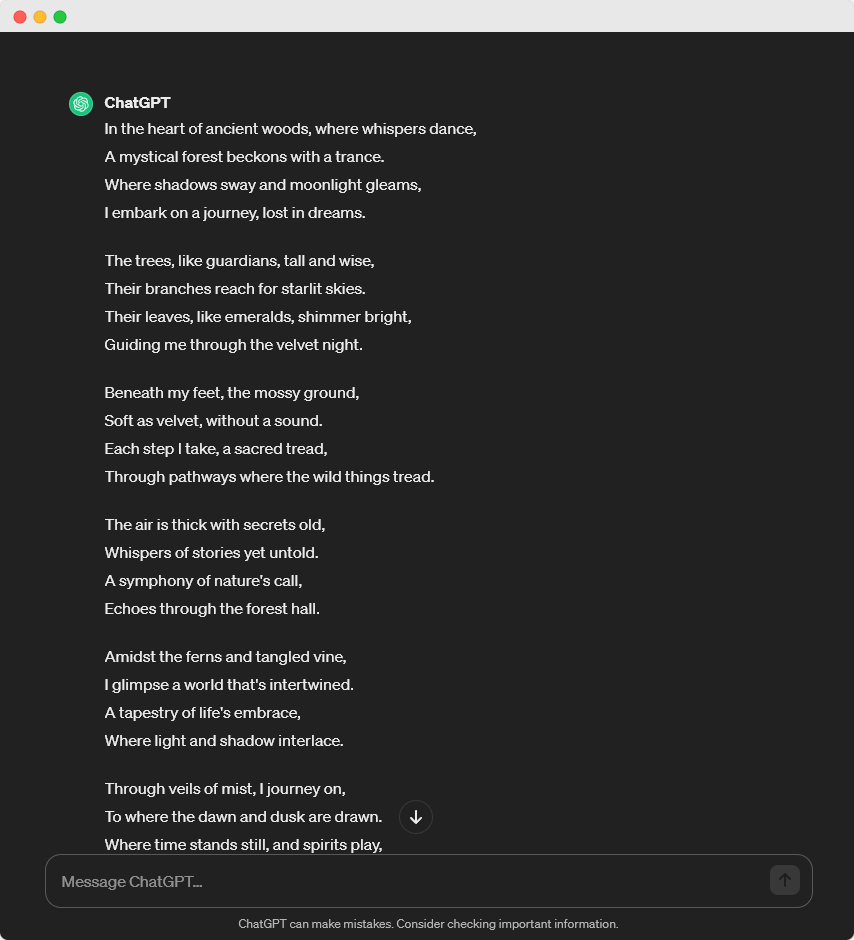
Google Gemini: Multimedia Integration
- Strengths: Google Gemini can enhance creative writing by suggesting multimedia content that can spark ideas and provide context.
- Activity Example: Students can use Google Gemini to find inspiration for their writing through thematic videos and images.
- Prompts:
- “Find a video of a peaceful nature scene to inspire a haiku about tranquility.”
- “Show me an image of a bustling cityscape to help describe the setting in a narrative.”
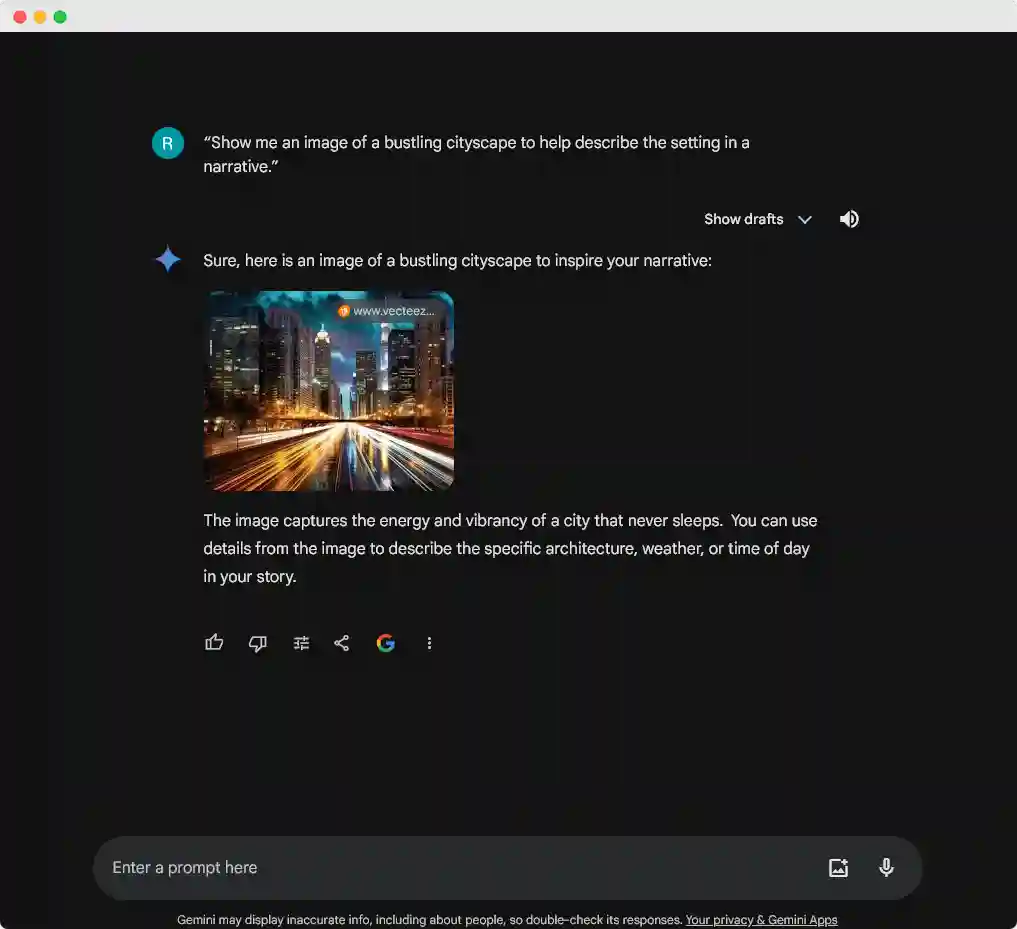
Microsoft Copilot: Research for Realism
- Strengths: Microsoft Copilot can assist in adding realistic details to creative writing by providing factual information and context.
- Activity Example: Students can enrich their stories with accurate historical or scientific details sourced by Copilot.
- Prompts:
- “Provide descriptions of life in medieval Europe to enhance a historical fiction piece.”
- “Explain the behavior of comets for a science fiction story set in space.”
Students can use imagination and real-world knowledge to improve their creative writing and poetry with these AI tools. Teacher-guided prompts can maximize each AI tool for engaging and instructional creative writing.
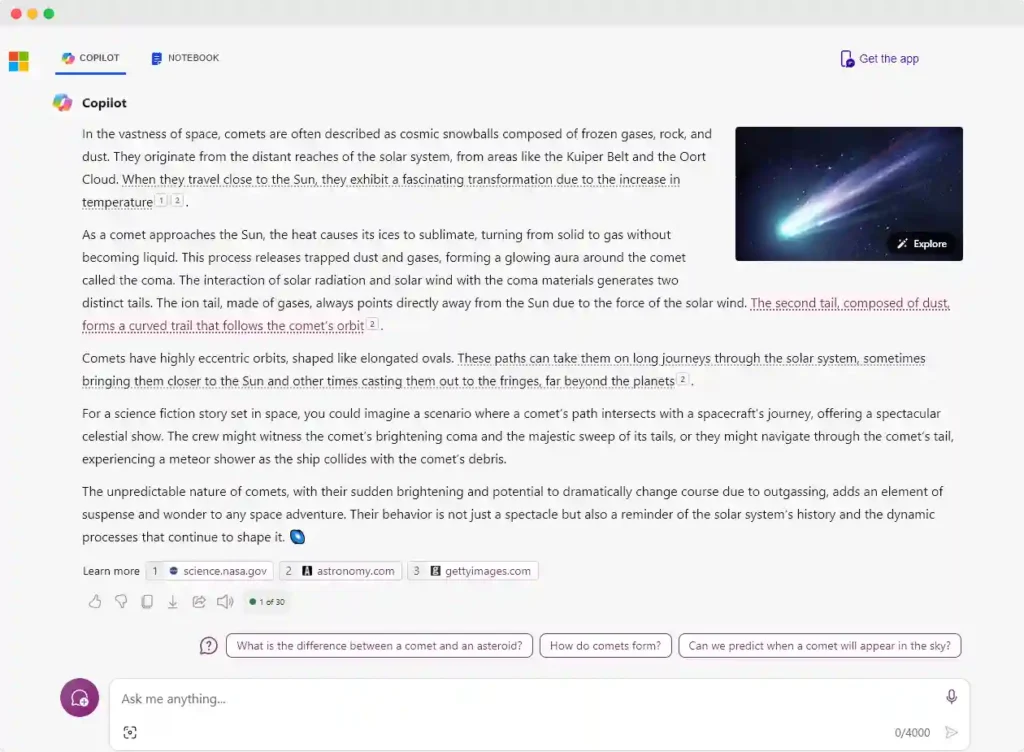
7. Historical Events and Timelines
Exploring historical events and timelines can be an engaging way for students to connect with the past. AI tools can bring history to life by recreating dialogues, visualizing timelines, and providing in-depth analysis.
ChatGPT: Dramatizing History
- Strengths: ChatGPT can generate historical dialogues and debates, allowing students to explore different perspectives from the past.
- Activity Example: Students can script and perform a debate between historical figures on key events, with ChatGPT providing the dialogue.
- Prompts:
- “Create a conversation between Alexander Hamilton and Thomas Jefferson on the topic of federalism.”
- “Write a debate script on the merits of exploration during the Age of Discovery.”
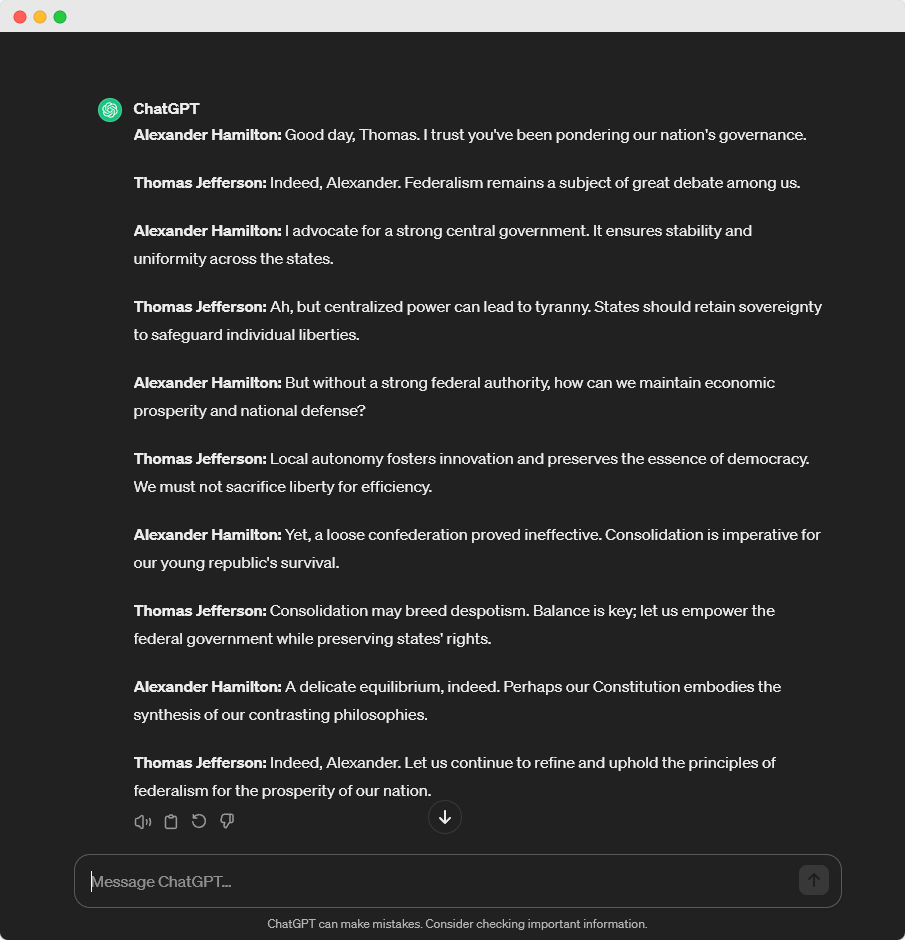
Google Gemini: Mapping the Past
- Strengths: Google Gemini can help visualize historical timelines and significant milestones, making it easier for students to grasp the sequence of events.
- Activity Example: Students can create interactive timelines of major historical periods, with Google Gemini suggesting important dates and events.
- Prompts:
- “Show a timeline of the major battles of World War II.”
- “Visualize the key events leading up to the signing of the Declaration of Independence.”
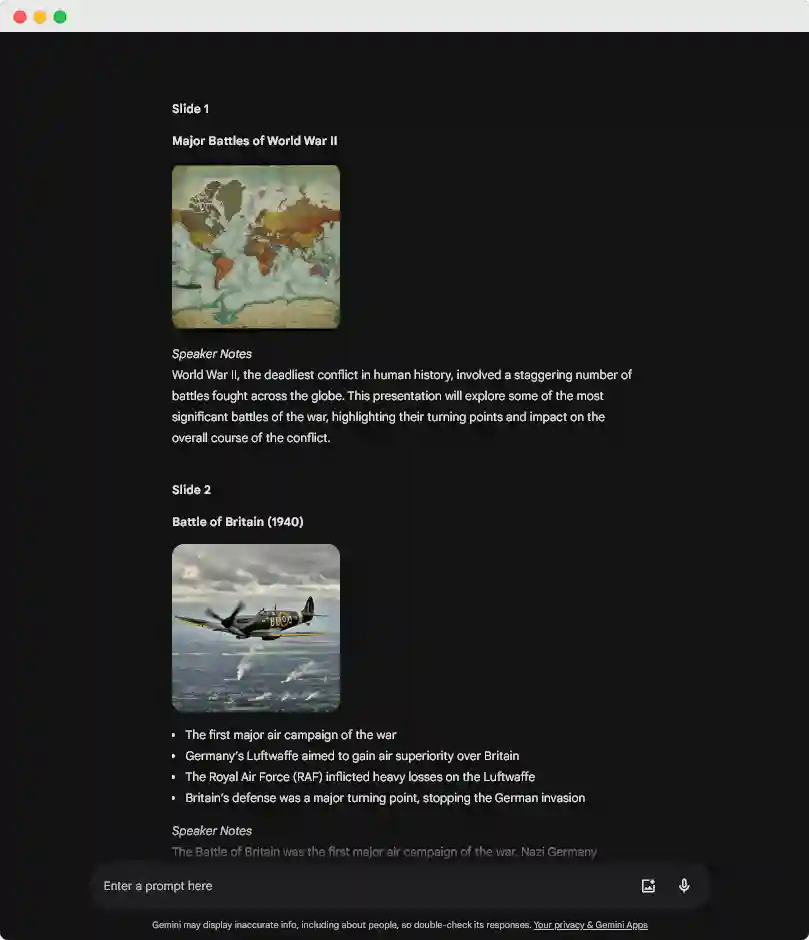
Microsoft Copilot: Contextual Deep Dives
- Strengths: Microsoft Copilot can provide detailed context and analysis of historical events, enriching students’ understanding with a comprehensive view.
- Activity Example: Students can research a specific event, like the fall of the Roman Empire, and Copilot can supply a detailed analysis.
- Prompts:
- “Explain the economic factors that contributed to the fall of the Roman Empire.”
- “Analyze the social impact of the Industrial Revolution in Europe.”
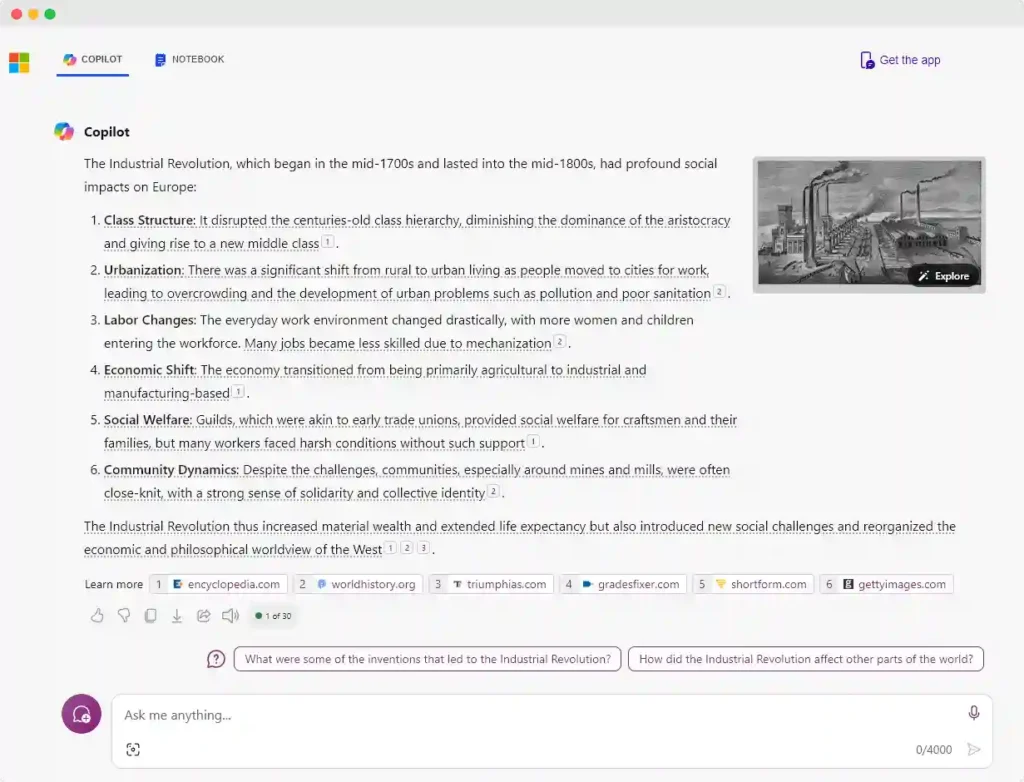
Students can learn more about the events that have shaped our world by using these AI tools to interact with history in a new and interesting way. Teachers can help students come up with questions that get the most out of each AI tool, which makes learning more fun and interesting.
8. Art and Design
Art and design education benefits greatly from the integration of AI, providing students with interactive and personalized learning experiences. Each AI tool offers unique capabilities that can aid in teaching various aspects of art and design.
ChatGPT: Art History Conversations
- Strengths: ChatGPT can engage students in discussions about art history and different art styles, enhancing their understanding and critical thinking skills.
- Activity Example: Students can have a dialogue with ChatGPT about the evolution of art styles from classical to modern times.
- Prompts:
- “Discuss the main characteristics of Renaissance art and its impact on modern design.”
- “Compare and contrast the art styles of Impressionism and Cubism in a table.”
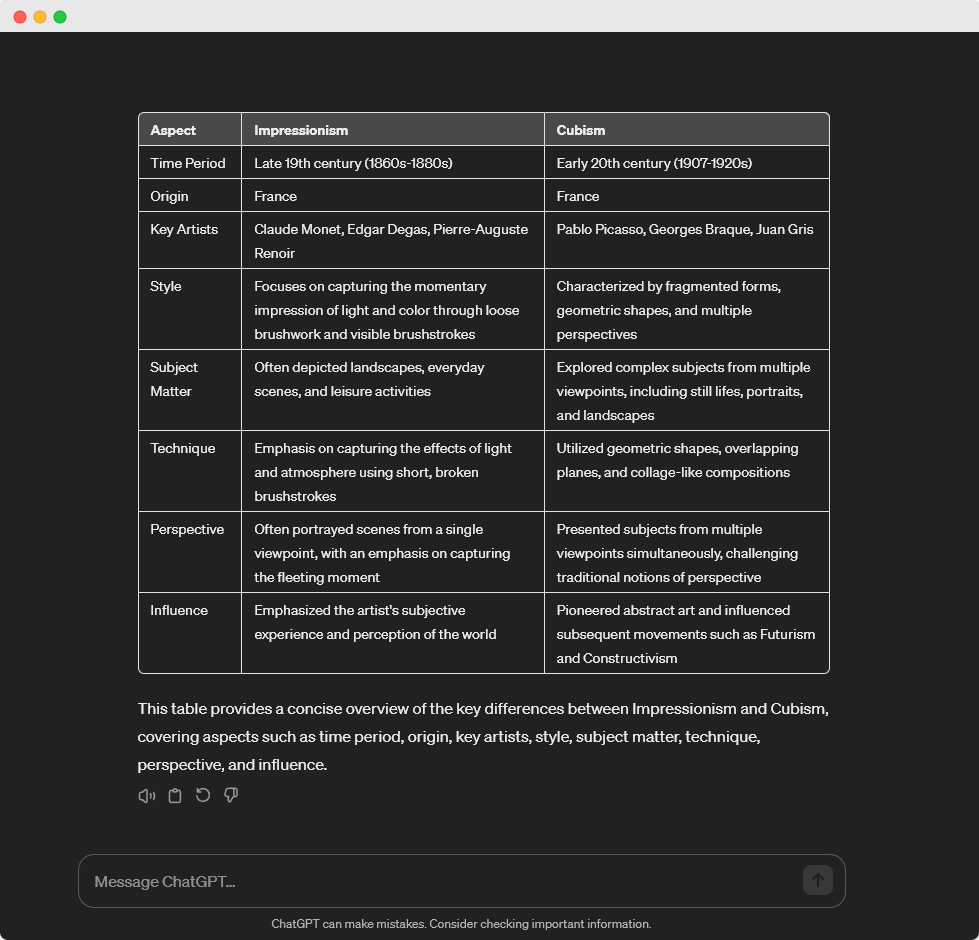
Google Gemini: Design Enhancement
- Strengths: Google Gemini can suggest design modifications and improvements, helping students refine their art projects with AI insights.
- Activity Example: Students can present their design projects and use Google Gemini to receive suggestions for color, layout, and style enhancements.
- Prompts:
- “How can I improve the balance and symmetry of my poster design?”
- “Suggest ways to make my digital illustration more engaging and vibrant.”
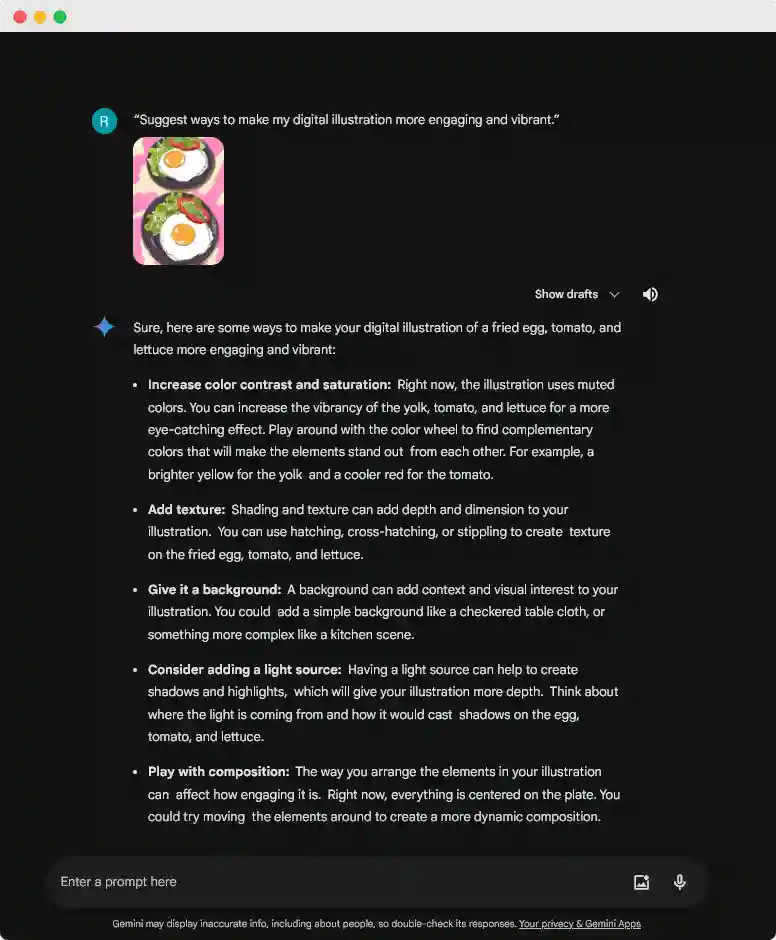
Microsoft Copilot: Color Theory Exploration
- Strengths: Microsoft Copilot can explore color theory and design principles through AI-generated examples, providing a practical understanding of design concepts.
- Activity Example: Students can learn about color harmony and contrast by analyzing AI-generated color palettes and designing mockups.
- Prompts:
- “Generate a color palette based on the theme of ‘ocean conservation’ and explain the choices.”
- “Create a series of design mockups showcasing the use of complementary colors in advertising.”

These AI tools can help art and design teachers teach a wide range of creative ideas that students can then use in their own work. Teachers can make tasks that get students to use the best features of each tool, which makes them more interested in the creative process.
9. Coding and Computer Science
Coding and computer science are essential skills in the modern world. AI tools can provide unique support in teaching these subjects, making complex concepts more accessible and engaging for students.
ChatGPT: Debugging and Conceptual Clarification
- Strengths: ChatGPT can assist students in debugging code snippets and clarifying programming concepts, making it an invaluable tool for learning to code.
- Activity Example: Students can present problematic code snippets to ChatGPT, which will help identify errors and explain how to fix them.
- Prompts:
- “I have a Python function that’s not working as expected. Can you help me debug it?”
- “Explain the concept of recursion in programming with an example.”
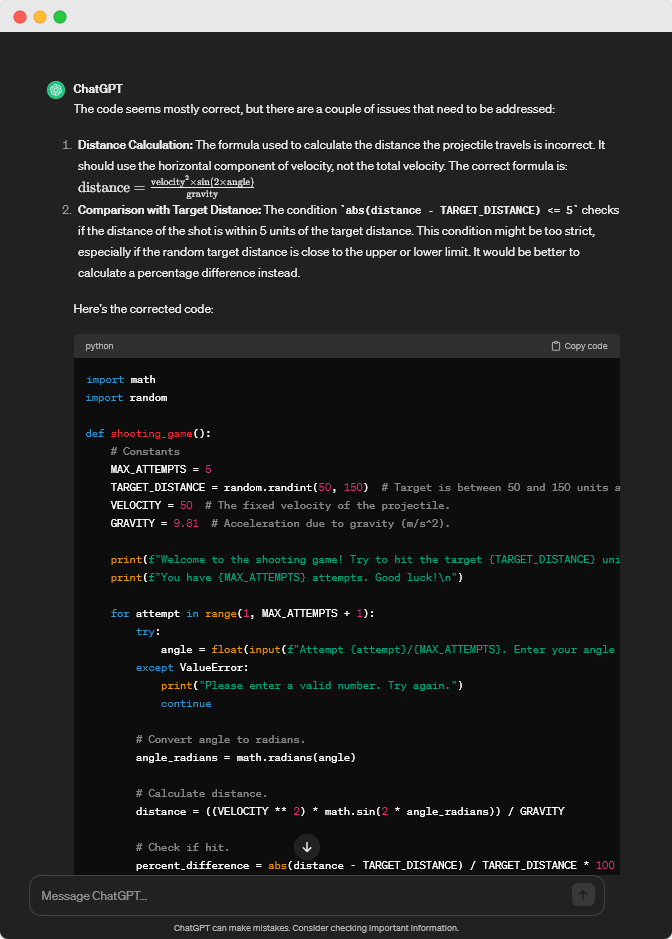
Google Gemini: Algorithm Visualization
- Strengths: Google Gemini can help students visualize algorithms and data structures, aiding in their understanding of abstract concepts.
- Activity Example: Students can use Google Gemini to create visual representations of sorting algorithms or binary trees.
- Prompts:
- “Show me a visual step-by-step of the QuickSort algorithm.”
- “Create a diagram of a linked list and explain how nodes are connected.”
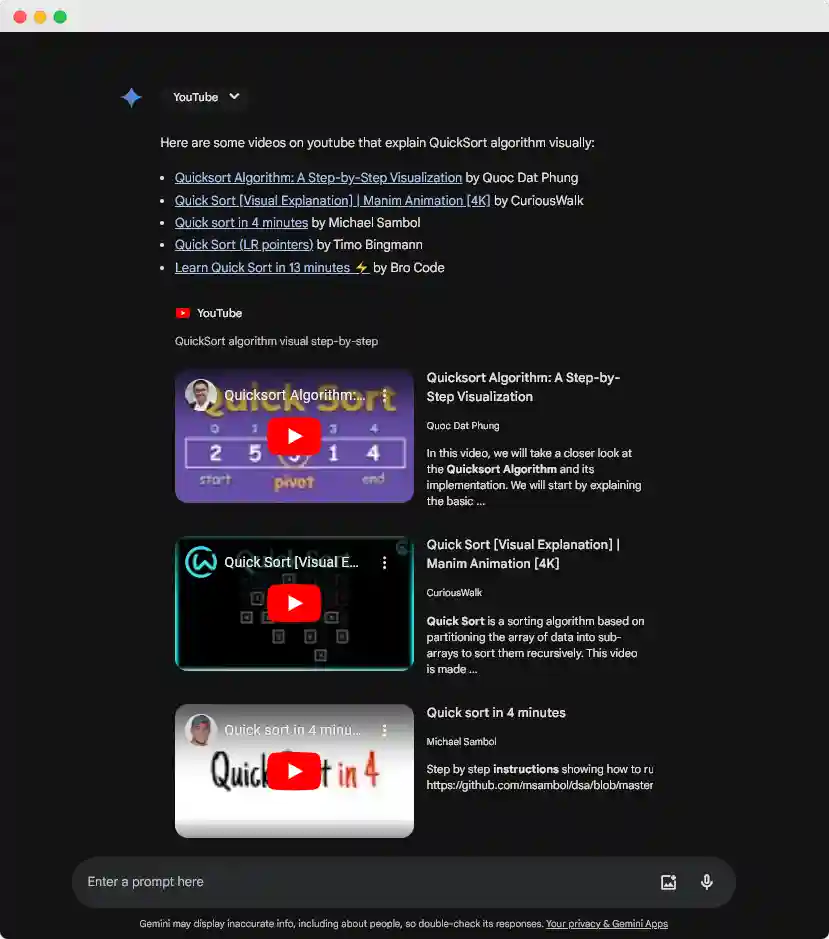
Microsoft Copilot: Project-Based Learning
- Strengths: Microsoft Copilot can guide students through the creation of small coding projects, illustrating the software development cycle from start to finish.
- Activity Example: Students can work on mini-projects like building a simple calculator or a to-do list application with Copilot’s guidance.
- Prompts:
- “Let’s build a simple HTML/CSS website that showcases my favorite books.”
- “Help me code a basic JavaScript game that teaches math skills to young children.”
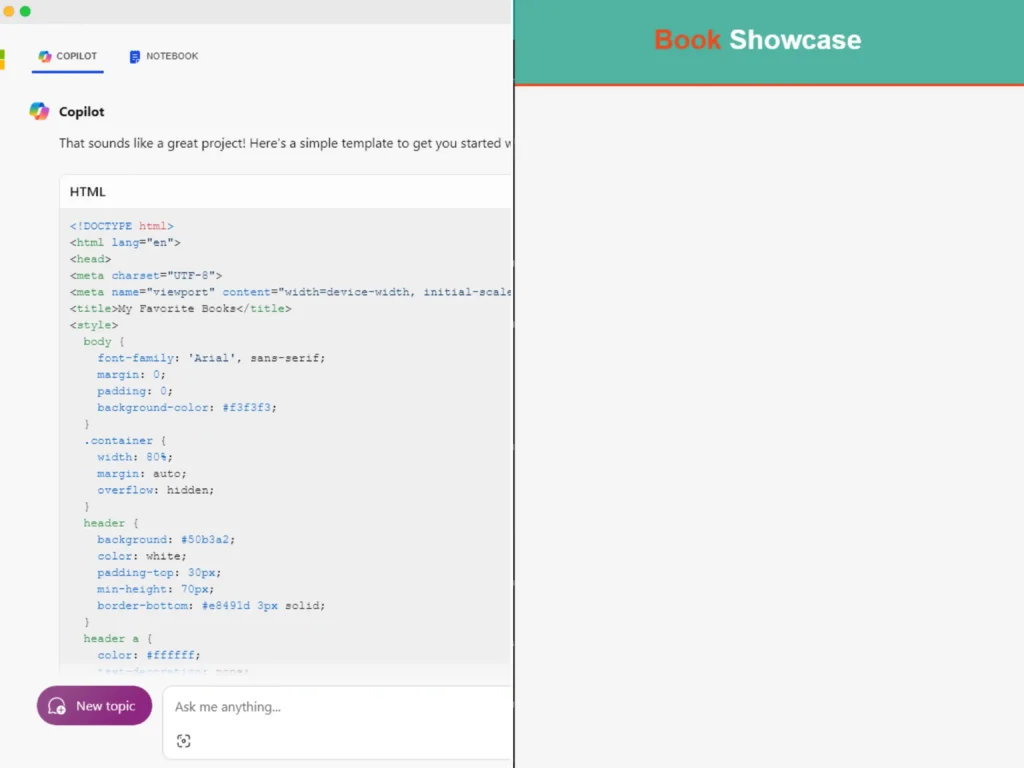
Students can get real-world practice with coding and build a strong foundation in computational thinking by using these AI tools in computer science classes. Teachers can make tasks that get students to try out different kinds of coding problems and help them learn more about computer science.
10. Social Studies and Geography
Social studies and geography are key subjects that help students understand the world around them. AI tools can make these subjects more interactive and engaging by simulating real-world scenarios and analyzing data.
ChatGPT: Historical Role-Playing
- Strengths: ChatGPT can simulate conversations with historical figures or government leaders, allowing students to role-play and explore different viewpoints.
- Activity Example: Students can engage in a role-play activity where they assume the identities of world leaders during significant events.
- Prompts:
- “Role-play a meeting between President Franklin D. Roosevelt and Prime Minister Winston Churchill during WWII.”
- “Simulate a debate between suffragettes and traditionalists in the early 20th century.”
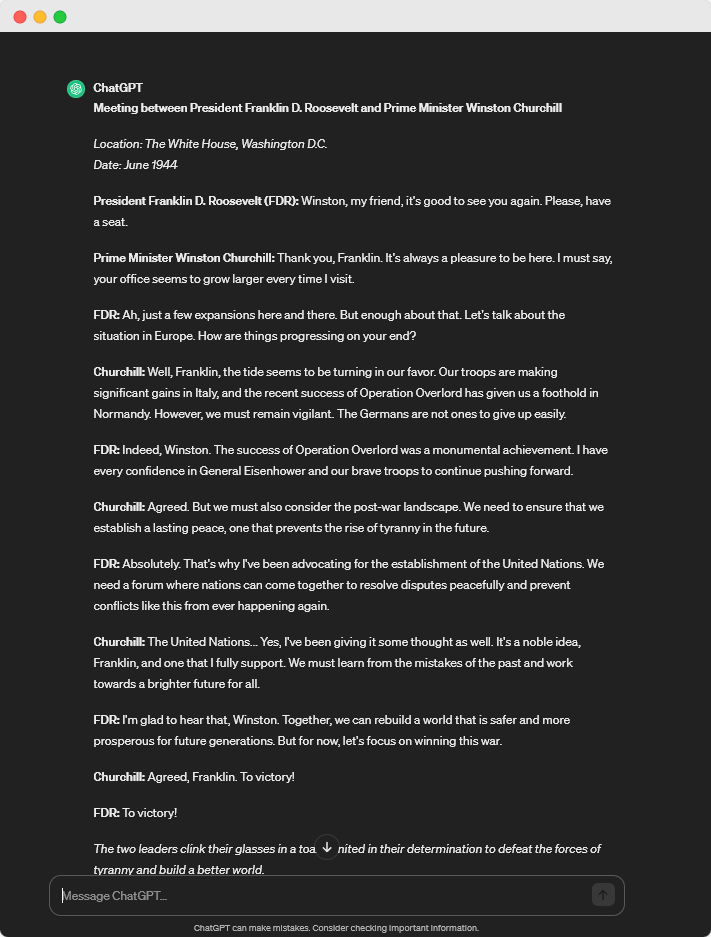
Google Gemini: Data Analysis and Visualization
- Strengths: Google Gemini excels in analyzing demographic data, offering insights into social and geographical trends.
- Activity Example: Students can examine case studies on population growth, migration patterns, or resource distribution and use Google Gemini to interpret and visualize the data.
- Prompts:
- “Analyze the migration trends in Europe over the last century and discuss the causes behind these patterns.”
- “Study the distribution of natural resources in South America and explain how it affects regional development.”
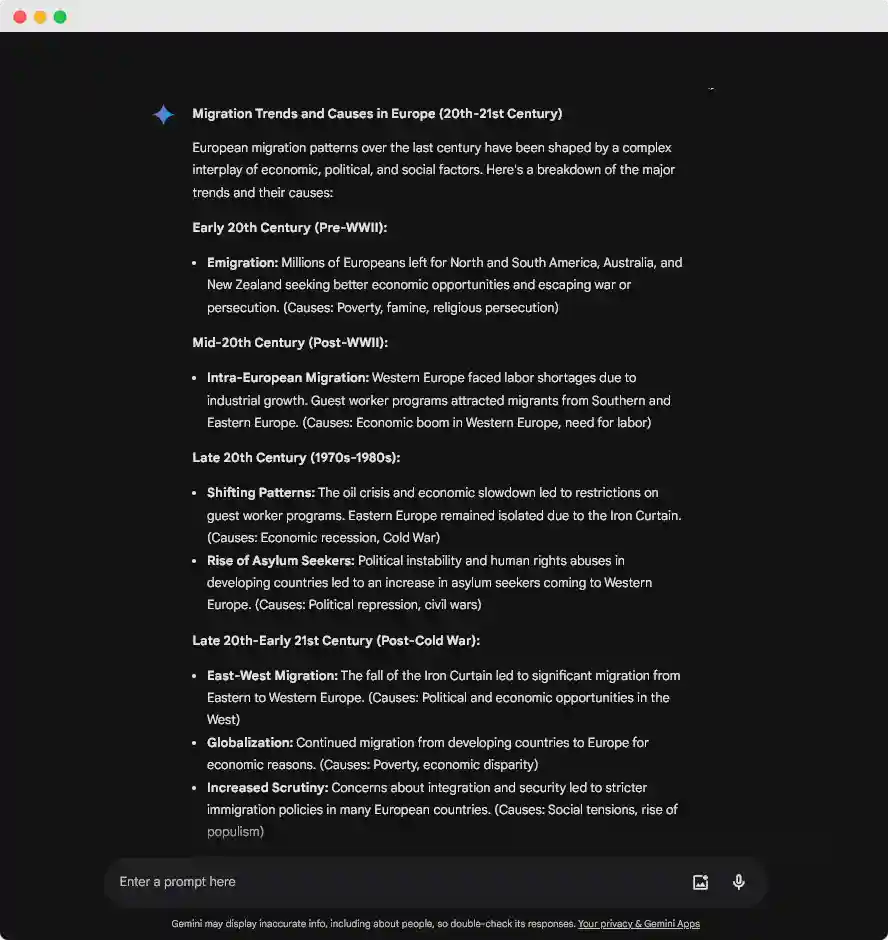
Microsoft Copilot: Global Issues and Diplomacy
- Strengths: Microsoft Copilot can facilitate discussions on global issues and simulate diplomatic negotiations, helping students grasp the complexities of international relations.
- Activity Example: Students can use Copilot to simulate a United Nations summit where they negotiate resolutions to global challenges.
- Prompts:
- “Discuss the steps involved in creating a treaty addressing climate change.”
- “Simulate a negotiation between countries on the topic of nuclear disarmament.”
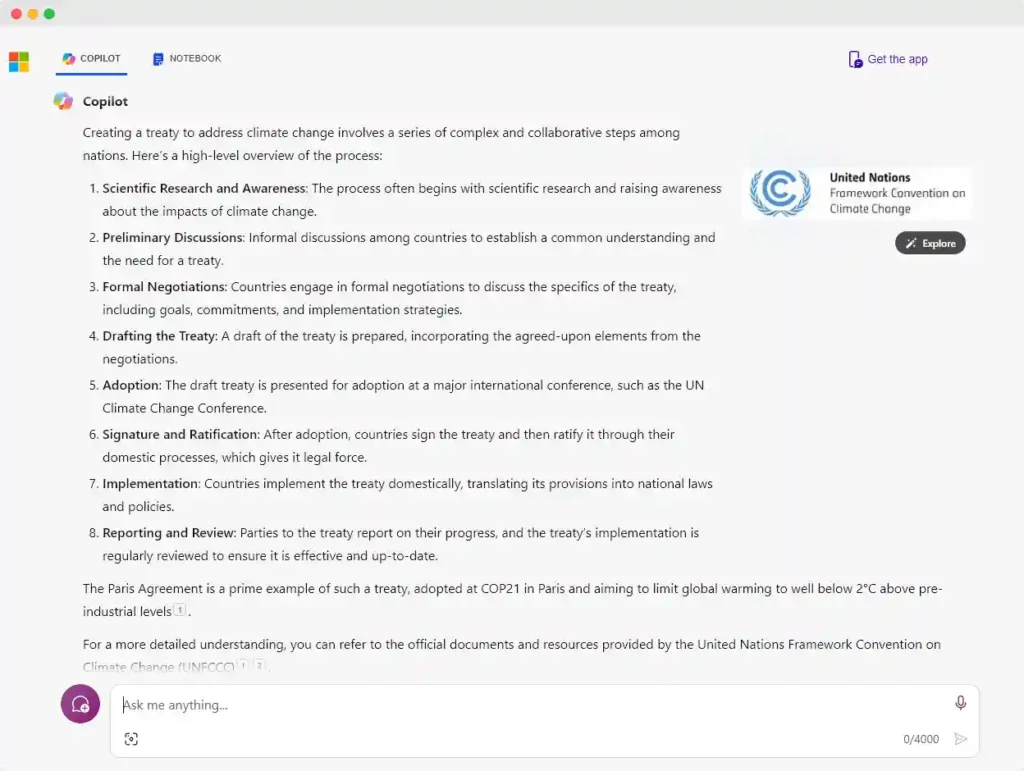
Students can learn more about past events, population trends, and the value of diplomacy by using these AI tools in their social studies and geography classes. Teachers can make prompts that get students to interact with the material in a meaningful way, which helps them think critically and see things from a world point of view.
Conclusion: Strategies for Teaching AI
I’ve got a secret to share that could revolutionize your approach to education: employing strategies for teaching AI in the classroom can completely transform the learning experience.
Imagine it as assembling a superhero team, where each AI tool brings its own unique strength to the table. ChatGPT shines as the creative mastermind, Google Gemini excels as the analytical genius, and Microsoft Copilot emerges as the scholarly sage.
By integrating these diverse abilities, we create an educational environment that’s not only rich in knowledge but also vibrantly engaging.
This synergy of strategies for teaching AI can electrify your classroom atmosphere, making learning an adventure that students are eager to embark on.
Trust me, this blend has the power to create an unparalleled buzz of excitement and curiosity among your students!









Recent Comments